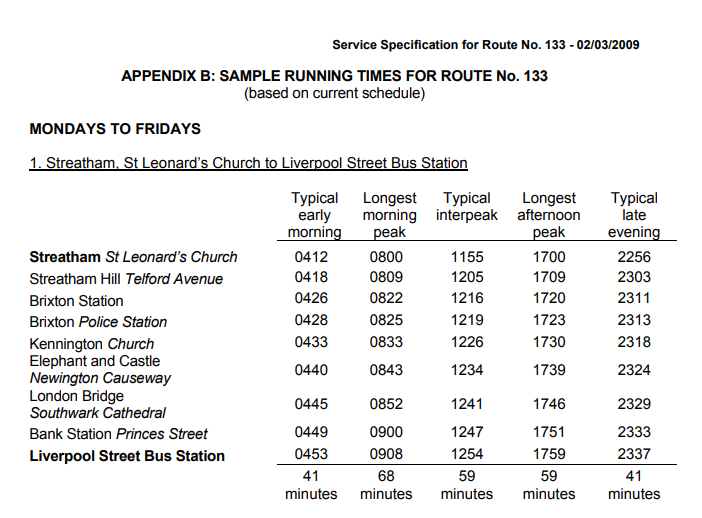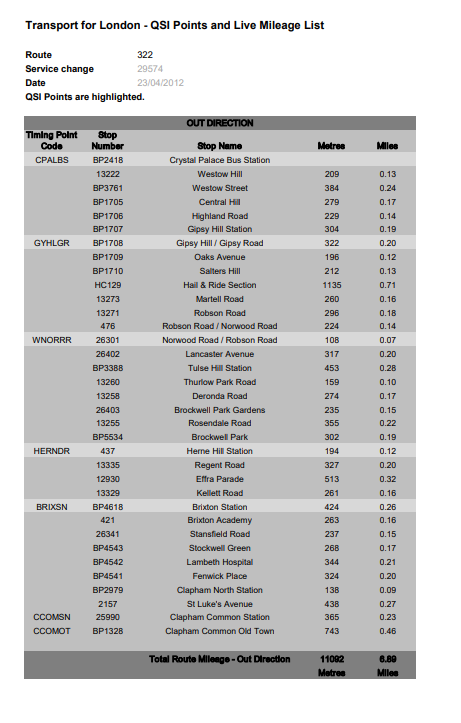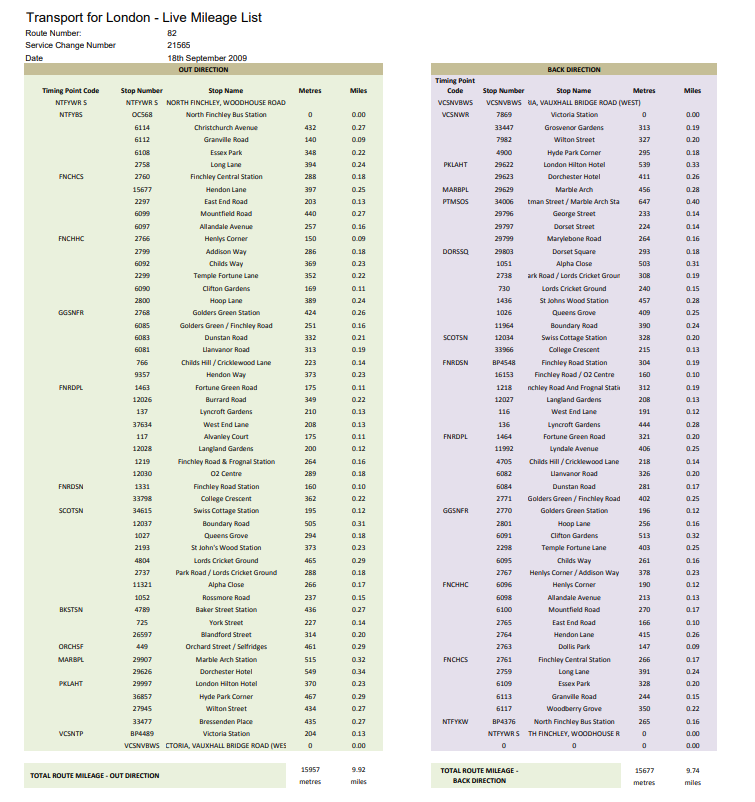 |
| Performance graph |
We know about Excess Wait Times
EWT = Actual Wait Time - Scheduled Wait Time
e.g route 3 for an hour at 1600pm:
wait 8 mins, then 12 mins, then 14, then 8, then 11, then 10, then 12 = 75 mins total
8*4 + 12*6 + 14*7 + 8*4 + 11*5.5 + 10*5 + 12*6 = 416.5
416.5 / 75 = 5.55
AWT = 5.55
SWT (half frequency of route [route 3 is every 10]) = 5 mins
AWT - SWT = 0.5 mins = EWT
Here's an article for more detail.
The function of Excess Wait Times is simple: Make wait times consistent.
In theory this should be fine for passengers. No one likes waiting longer than they should.
Though in reality, it's ended up becoming so important that the essence of a reasonable bus journey was sacrificed, for profits. Profitability is important in a capitalist society, but above all else, losing money is something even more important to avoid.
That's the oversimplification of matters, a lot of bus routes aren't profitable after all (think of all the small single deck routes).
When two buses are sharing the same headway (i.e bunched), it's calculated as one bus in the system. As a result, you have lost mileage for that duration.
By performing better than the minimum standard, the operator is given bonuses.
By performing worse than the standard, lose mileage - the operator is fined for it.
Regulation, which is helpful to keeping EWT to standard. You're not the customer, the company is the customer, and they deliver.
As of 2023 a lot of routes had running time reductions by reducing the Peak Vehicle Requirement by one bus, fine and dandy to wait less - if your bus isn't less reliable as a result. Thus waiting longer ironically. Back to square one.
Therefore, Excess Journey Time
my idea is to add a version of EWT but in journey time form. With the intention of making EWT/EJT one whole umbrella math mess, as opposed to two systems to be mindful of being fined/bonuses for.
 |
| example rendition |
Preferably a separate system to how EWT is utilised to fine/bonus performance, given the high amount of QSI points a busy route would have. To then have EJT on top of that would just mean being fined twice as much as currently.
Not a bad deal for TfL
A deal you'd haggle more for increased profits, or consider leaving just that bit more, as an operator.
That's how I imagine it at least.
It would be measured similar to EWT, whereby 1.10 or 1.20 or even 1.30 minutes being the standard, depending on routes.
There are routes that have 0.90 mins EWT which will be accounted for in this comparison of using EWT as a template.
Measured from the start stop until the end stop, compared to the scheduled journey time. Preferably compared to actual schedule, though not perfectly replicable with high-frequency services where timetabled journeys are less relevant compared to even headways.
 |
| Something like this for running times to be calculated in Excess Journey Times |
e.g route 5 takes ~80 minutes Romford-Canning Town on weekdays in early peak hours and off-peak
the 5's EWT minimum standard is 1.20 mins
multiplying that with 1.2 means a maximum of 96 minutes journey time.
16 minutes is a little much personally, however...
Slightly extreme example as the A13 road does cause ultimate mayhem in the areas the 5 serves, how this should be accounted for is slightly scratching my head. Already is a back-and-forth regarding mileage when it comes to roadworks and the like, so this is throwing another point of contention/debate if by some logic, Excess Journey Time discrepancy and mileage loss don't point to the same thing - in this case, severe delays by external forces outside of control.
 |
| Lighter grey stops are QSI points |
This is to combat the constant regulation of services where they hold back for a few minutes. In outrageous cases where 7-10 minutes would be regulated at a stop, it's been reduced to a maximum of 3 minutes. This still doesn't mean the bus won't stop at multiple stops and regulate for up to 3 minutes each time.
Regulation is sometimes/usually done just before a Quality of Service Indicator point. See image to right>
Another effect is penalising long driver changeovers on routes that have live changeovers, i.e mid-route. Some garages have very leisurely attitudes to such, whilst some respect the time of passengers they're responsible for.
This might be a measure to spot the "artificial mileage cover" whereby the operator's service control has a bus select a trip on iBus to redo whilst Not in Service in order to cover mileage lost.
If you don't often see a "Not in Service" bus that happened to be on countdown as you were waiting for a bus, then count yourself lucky. A few instances I've noticed whilst waiting for the 3 which is very obvious as the only route along South Croxted Road, as well as some other routes.
Furthermore, linking destinations with iBus by way of iBus recognising what destination is selected could curb artificial mileage covering.
Boy the real mileage graphs of many routes would drop noticeably with that.
That's to say, if somehow duplicate journeys being covered at different times wasn't already picked up, yet still can't be with Excess Journey Time calculating, then it really is a forgiving case in a system where the powers that be has the ability to penalise for lost mileage and other fines, perhaps even revel in it when they've been cutting costs until barebones now.
 |
| Couldn't help looking at 82 (now 13) which had 13 timing points |
This is another reason whereby you, the passenger, are not the customer of TfL's service. Long gone are the days of London Transport directly operating your service, (assuming you weren't unlucky to have miserable operation on quieter routes).
There was a case of Abellio's B7TLs failing to schedule at Beddington Cross (BC) on both the 3 and 157. Of course the 157 would later be retained with them, with a schedule change, though still meant it needed a few Tridents to help (and also their B7TLs had a habit of bursting to flames very often)
Again another food for thought, once again, thanks for reading, once again, stay safe and until the next one!
No comments:
Post a Comment